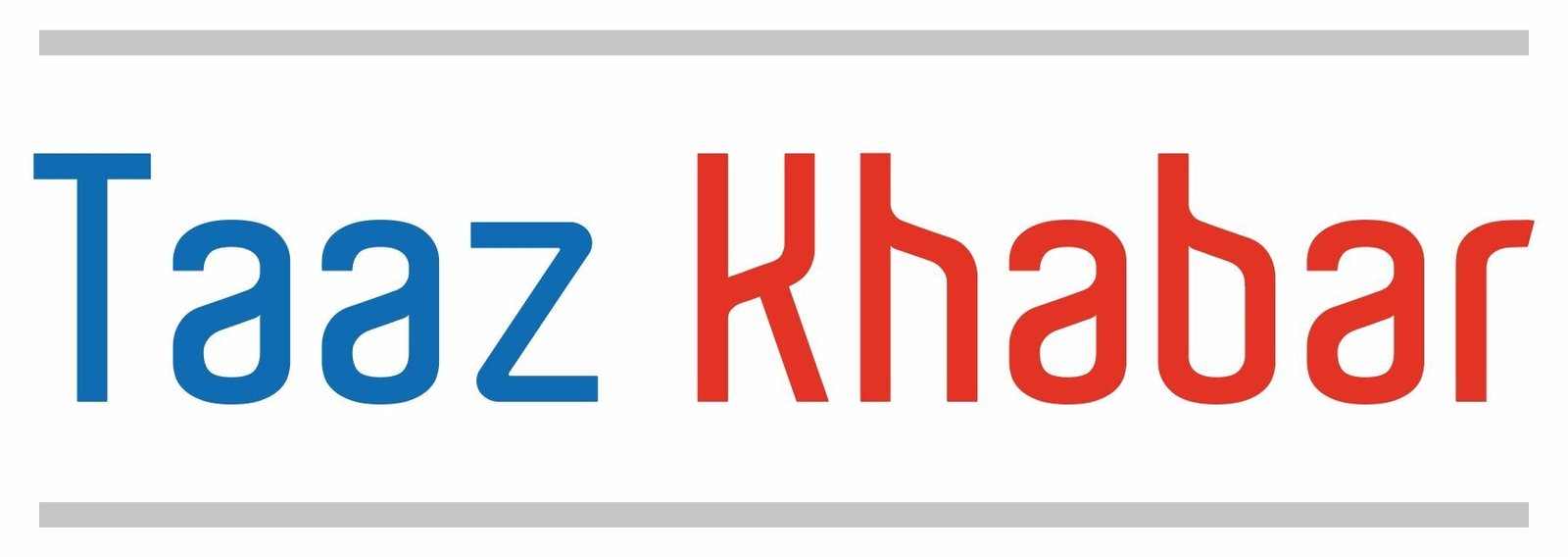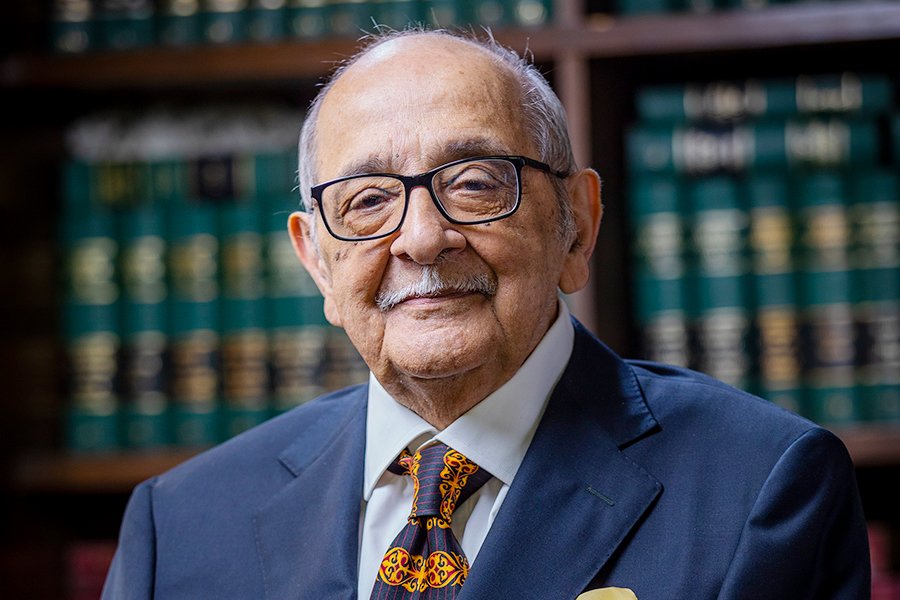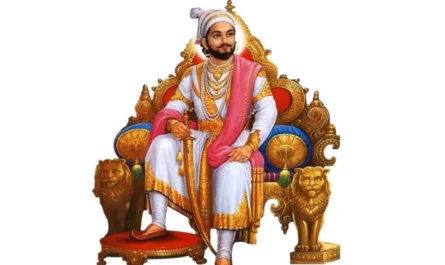Addendum Fali Nariman Renowned jurist and Senior Attorney in the Supreme Court Fali Nariman dies at age 95
Fali Nariman Renowned jurist and Senior Attorney in the Supreme Court, Fali Nariman, passes away at the age of 95. Learn more about his remarkable legal career and contributions
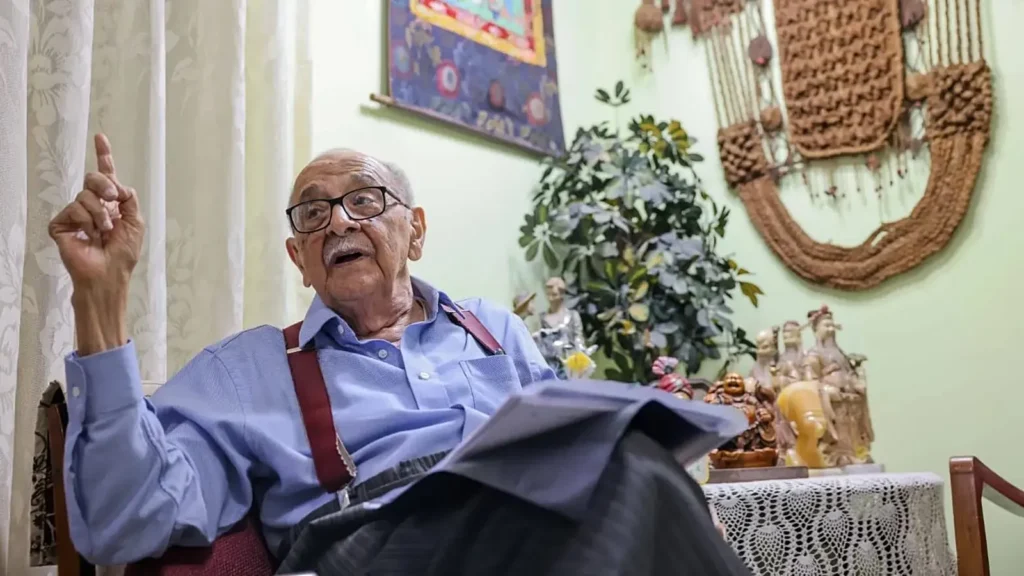
Table of Contents

Fali Nariman
Fali Sam Nariman was an Indian jurist and senior advocate to the Supreme Court of India since 1971. He was born on January 10, 1929, in Rangoon, British Burma, British India (present-day Yangon, Myanmar). Nariman was an internationally recognized jurist on international arbitration and one of India’s most distinguished constitutional lawyers. He argued several leading cases and was part of several landmark cases which paved the way for the evolution of Indian constitutional law. Nariman passed away on February 21, 2024, at the age of 95. He was awarded the Padma Bhushan in 1991 and Padma Vibhusham in 2007[4]. His autobiography is called “Before Memory Fades”.

Unveiling the Legacy of Fali Nariman: A Distinguished Jurist and Constitutional Luminary
Introduction
In the realm of Indian law, few names command as much reverence and admiration as Fali Nariman. His towering intellect, unwavering commitment to justice, and profound understanding of constitutional intricacies have left an indelible mark on the legal landscape of India. In this blog post, we delve into the life, achievements, and enduring legacy of the venerable jurist, with a focus on the remarkable journey of Fali Nariman.
Early Life and Education
Fali Sam Nariman was born on January 10, 1929, in Rangoon, British Burma (present-day Yangon, Myanmar). His formative years were shaped by a deep-seated passion for the law, which propelled him towards a stellar academic journey. After completing his education in Mumbai, he pursued law at the Government Law College, where he honed his legal acumen and laid the foundation for an illustrious career.
Legal Career and Landmark Cases
Nariman’s ascent to legal eminence was swift and resplendent. His advocacy prowess and incisive legal mind led to his designation as a senior advocate to the Supreme Court of India in 1971. Throughout his career, he was instrumental in arguing several seminal cases that significantly influenced the evolution of Indian constitutional law. His contributions have been pivotal in shaping the legal framework of the nation, earning him widespread acclaim and reverence within the legal fraternity.
Contribution to International Arbitration
Beyond his national impact, Fali Nariman’s expertise extended to the realm of international arbitration. He was widely recognized as a luminary in this domain, with his counsel being sought after on a global scale. His erudition and insights have left an indelible imprint on the practice of international arbitration, further cementing his status as a legal stalwart of unparalleled repute.

Awards and Accolades
The prodigious contributions of Fali Nariman have been duly recognized through a myriad of prestigious accolades. Notably, he was conferred with the Padma Bhushan in 1991 and the Padma Vibhushan in 2007, underscoring the profound impact of his work and his enduring legacy in the annals of Indian jurisprudence.
Legacy and Enduring Influence
Even after his passing on February 21, 2024, at the age of 95, Fali Nariman’s legacy continues to reverberate through the hallowed corridors of justice. His memoir, “Before Memory Fades,” stands as a testament to his extraordinary life and serves as an invaluable chronicle of his experiences, insights, and invaluable contributions to the legal fraternity.
Conclusion
In encapsulating the life and legacy of Fali Nariman, we are confronted with a tapestry of legal brilliance, unwavering integrity, and an unyielding commitment to justice. His impact transcends generations, serving as an inspiration for aspiring legal minds and a guiding light for those navigating the complex labyrinth of constitutional law. The indelible imprint of Fali Nariman endures as a testament to the transformative power of legal acumen and the enduring pursuit of justice.
Feel free to use this content as a foundation for your blog post on “Fali Nariman.” If you need further assistance or additional content, please don’t hesitate to ask!
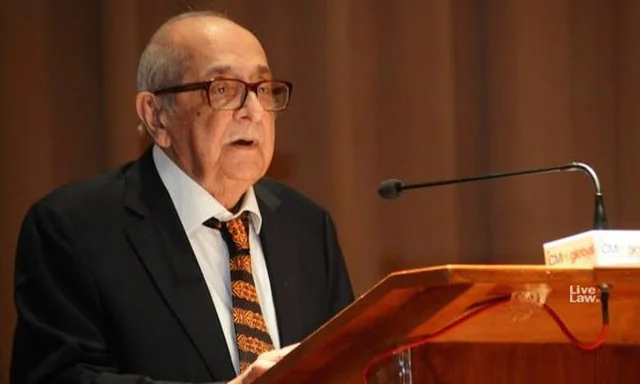
What was fali nariman’s role in the indian judiciary
Fali Nariman was a distinguished jurist and constitutional luminary who played a significant role in the Indian judiciary. He was a senior advocate to the Supreme Court of India since 1971 and was the President of the Bar Association of India. Nariman argued several landmark cases, including the famous NJAC verdict, the important SC AoR Association case (which led to the collegium system), and the TMA Pai case (on the scope of minority rights under Article 30). He was an internationally recognized jurist on international arbitration and one of India’s most distinguished constitutional lawyers.
Nariman was awarded the Padma Bhushan in 1991 and Padma Vibhusham in 2007. He resigned as the Additional Solicitor General of India in June 1975 to protest against the decision of the Indira Gandhi government to declare emergency. Despite making few appearances since 2020, his status and long innings have earned him an enduring place as a lodestar. His contributions have not only shaped landmark cases but have also inspired generations of jurists to uphold the sanctity of the Indian Constitution.
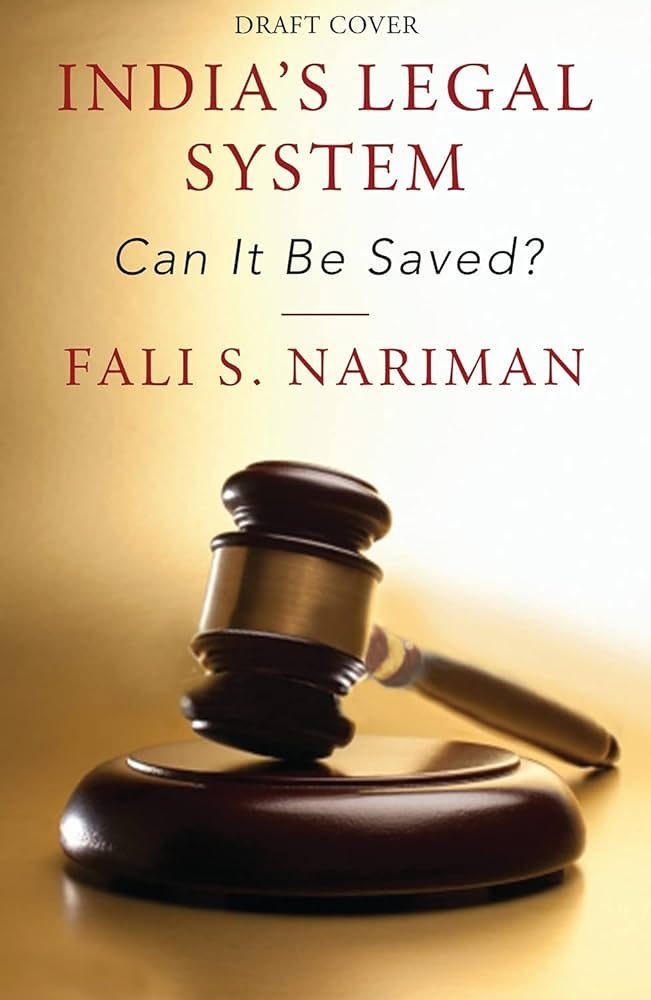
What was fali nariman’s impact on the indian legal system
Fali Nariman’s impact on the Indian legal system was profound and far-reaching. As a renowned constitutional jurist and senior advocate to the Supreme Court of India since 1971, Nariman made lasting contributions to the development of Indian constitutional law[2][4]. Some notable aspects of his influence include:
- Landmark Case Participation: Nariman participated in numerous high-profile cases that helped shape the course of Indian constitutional law, such as the NJAC verdict, the SC AOR Association case (leading to the collegium system), and the TMA Pai case (regarding minority rights).
- Global Authority: Nariman was an internationally recognized jurist on international arbitration and maintained a strong presence in global legal circles.
- Leadership Positions: Nariman held influential roles beyond his legal practice, including serving as the President of the Bar Association of India for almost two decades and holding various leadership positions in international organizations[3].
- Recognition and Honors: Nariman received multiple recognitions throughout his career, including the Padma Bhushan in 1991 and the Padma Vibhushan in 2007.
- Impactful Writings: Nariman authored several books, including “Before Memory Fades,” which remains a popular resource among law students and young lawyers.
- Enduring Impact: Even after his death, Nariman’s legacy continues to inspire future generations of jurists and contribute to the ongoing evolution of Indian constitutional law.
These elements collectively demonstrate the depth and breadth of Fali Nariman’s impact on the Indian legal system. His contributions serve as a reminder of the importance of upholding the rule of law and promoting justice in society.
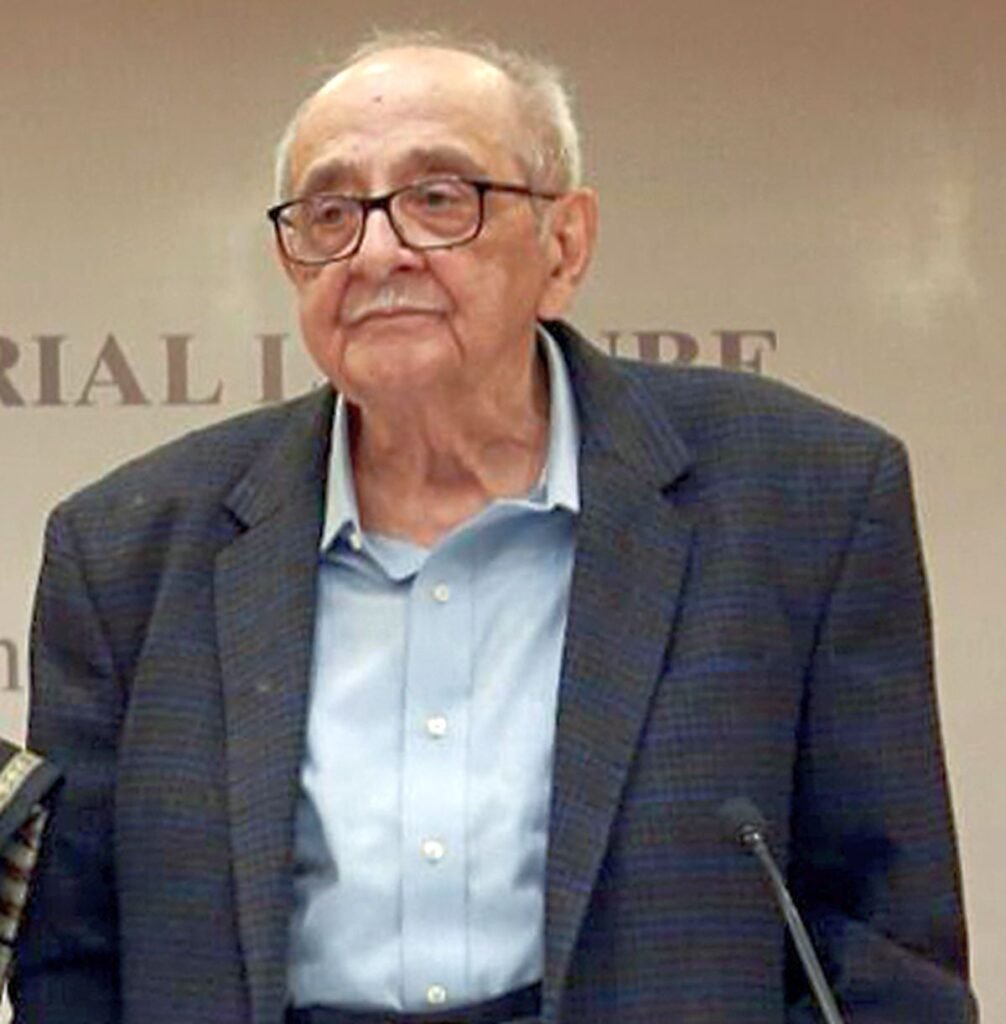
What were some of fali nariman’s most famous cases
Fali Nariman contributed greatly to the Indian legal system through his involvement in several landmark cases. Some of these notable cases include:
- NJAC Verdict: Nariman played a crucial role in challenging the National Judicial Appointments Commission Act, which aimed to reform the appointment process of judges in higher courts. This case resulted in the striking down of the act by the Supreme Court.
- SC AOR Association Case: Also known as the First Judges Transfer Case, this case dealt with the transfer of judges between different high courts. It ultimately led to the establishment of the collegium system for appointing judges.
- TMA Pai Case: This case concerned the interpretation of Article 30(1) of the Indian Constitution regarding minority educational institutions. Nariman represented the petitioner, and the case established key precedents related to minority rights in education.
- Bhopal Gas Tragedy Case: Nariman defended Union Carbide Corporation during the infamous Bhopal gas disaster trial, representing the company in its appeal against criminal charges.
Additionally, Nariman served as the Additional Solicitor General of India until he resigned in June 1975 to protest against the declaration of the Emergency by the Indira Gandhi government. His contributions to the Indian legal system continue to be celebrated and remembered, inspiring generations of jurists to come.

What was the outcome of the golak nath case
The Golaknath case, officially known as I.C. Golaknath and Ors. v. State of Punjab and Anrs., was a significant landmark case in Indian constitutional law. The outcome of the case was that the Supreme Court ruled that Parliament could not curtail any of the Fundamental Rights in the Constitution. The judgment established the principle that Parliament cannot amend the fundamental rights guaranteed under Part III of the Indian Constitution. This decision strengthened the judiciary’s authority and established the principle of judicial review in India, having significant consequences for Indian constitutional law. The case is still cited frequently in Indian constitutional law and remains a pivotal ruling in the context of fundamental rights and the amending power of the Indian Parliament.
What was the background of the golak nath case
The Golak Nath case originated from a dispute involving Henry and William Golak Nath, two brothers who owned approximately 500 acres of farmland in Jalandhar, Punjab. In 1953, the Punjab government introduced the Punjab Security and Land Tenures Act, limiting individual ownership to 30 standard acres. The Golak Nath family challenged this legislation, arguing that it violated their fundamental rights under the Indian Constitution.
Key aspects of the background of the Golak Nath case include:
- The Golak Nath family owned around 500 acres of farmland in Punjab.
- The Punjab Security and Land Tenures Act limited individual ownership to 30 standard acres.
- The Golak Nath family challenged the constitutionality of the Act, claiming it violated their fundamental rights.
- The case reached the Supreme Court, which ruled that Parliament did not have the power to amend the fundamental rights enshrined in Part III of the Indian Constitution.
This landmark case established the principle of judicial review in India and significantly bolstered the judiciary’s authority. Despite the majority ruling, the case sparked debate among scholars and legal experts, leading to discussions about the balance between the powers of the legislative, executive, and judicial branches of government.
What was the punjab government’s justification for the golak nath case
The Punjab government’s justification for the Golak Nath case was that the Punjab Security and Land Tenures Act, which limited individual ownership of land to 30 standard acres, was necessary to promote land reform and reduce inequality in the state. The government argued that the Act was a reasonable restriction on the right to property, which was not an absolute right under the Indian Constitution. However, the Golak Nath family challenged the constitutionality of the Act, claiming that it violated their fundamental rights under the Constitution.
The case ultimately reached the Supreme Court, which ruled that Parliament did not have the power to amend the fundamental rights enshrined in Part III of the Indian Constitution. The case established the principle of judicial review in India and had significant consequences for Indian constitutional law.
what was the supreme court’s ruling in the golak nath case
In the Golaknath case of 1967, the Supreme Court of India ruled that the Parliament could not curtail any of the Fundamental Rights in the Constitution. The Golaknath family challenged the validity of the 1953 Punjab Act, which denied them their fundamental rights, and sought to have the Seventeenth Amendment declared ultra vires.
The Supreme Court, by a thin majority of 6:5, reversed its earlier decision which had upheld Parliament’s power to amend all parts of the Constitution, including Part III related to Fundamental Rights. The judgement left Parliament with no power to curtail Fundamental Rights. The Supreme Court held that the fundamental rights guaranteed under Part III of the Constitution were not amenable to amendment, and any amendment that sought to abridge or abrogate these fundamental rights would be unconstitutional and void. The decision in the Golaknath case introduced the concept of the unamendability of the Constitution, which held that certain provisions of the Constitution, particularly those related to fundamental rights, were beyond the scope of amendment.
What was the impact of the golaknath case on indian constitutional law
The Golaknath case significantly impacted Indian constitutional law by introducing the concept of unamendability of certain provisions, specifically those relating to fundamental rights. The Supreme Court ruled that Parliament could not amend the fundamental rights guaranteed under Part III of the Indian Constitution without violating the basic structure or essential features of the Constitution. This decision strengthened the judiciary’s authority and established the principle of judicial review in India.
However, the Golaknath case was partially overturned by subsequent Supreme Court decisions such as the Kesavananda Bharati case, which clarified that the Parliament could amend the Constitution provided that it did not alter the basic structure or essential features. Despite this limitation, the Golaknath case remains a foundational moment in Indian constitutional jurisprudence, highlighting the importance of balancing powers between the branches of government and ensuring the protection of individual liberties.
Stay connected with Taaz Khabar for the latest updates and news around the world! Follow us on Facebook and Instagram for exclusive and exciting content.
Join our Telegram channel and WhatsApp channel for the quick and latest updates in AUTOMOBILE, Bike, Car | BUSINESS | EDUCATION, How To, Results | ENTERTAINMENT,- Celebrities, Actor, Actress, – Influencer, – Movie, Bollywood Movie, Hollywood Movie, Tollywood South Indian Movie, – TV Reality Shows | ELECTRONICS, – Tech, – Gadget, Mobile, Laptop, Watch, | FINANCE | SPORTS, – Cricket, – Foot Ball | MORE, – Mix, Blog, News, Articles, | Others, – Game, – Technology, – Election, – Politics | REVIEWS | WEB STORIES and around the world!
Also, Read More Post Like This
Categories
Home | Blog | News | Articles | More | Mix |
For more news and updates from the More world, Articles stay connected with us at taazkhabar.com
If you enjoyed this story, then feel free to share it with your friends. Thank you for spending your valuable time on taazkhabar.com
Stay tuned for more entertainment updates and information on taazkhabar.com!
Happy Reading!
